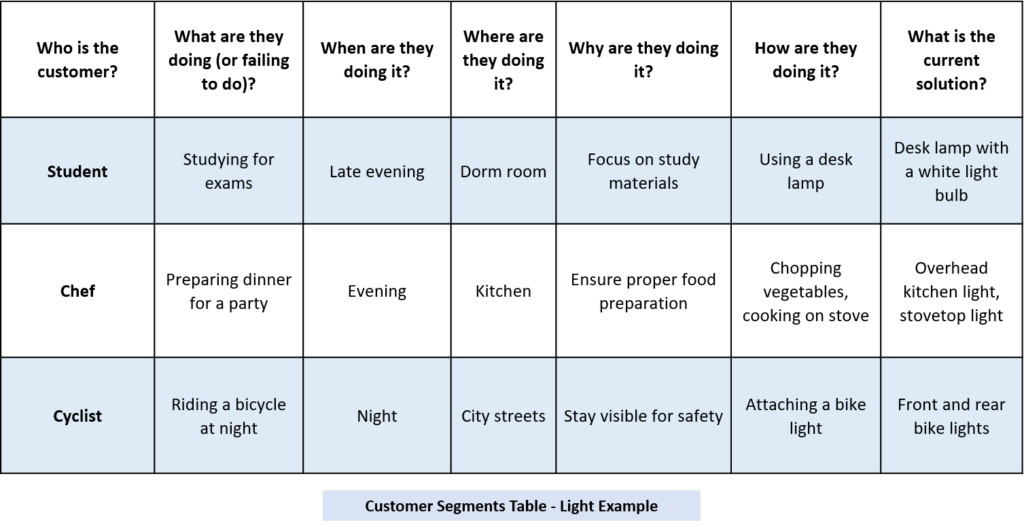In today’s highly competitive business landscape, understanding and satisfying customer needs is of utmost importance. It is the key to not only attracting new customers but also retaining existing ones. But how do you truly master the voice of the customer table (VOCT) and ensure your strategies align with their expectations? In this blog post, we will delve into the power of VOC tables and Gemba visits, two essential tools that can unlock valuable insights and help you better serve your customers. By utilizing VOC tables, you will gain a comprehensive understanding of customer feedback, preferences, and pain points. Additionally, Gemba visits will allow you to observe and engage with customers directly, providing firsthand knowledge that can drive meaningful improvements. Join us as we explore the potential of these techniques and discover how to harness the power of the voice of the customer to propel your business forward.
Table of Contents
- Voice of the Customer Table (VOCT)
- How to conduct a GEMBA visit
- How to translate VOC into customer needs
- Benefits of VOCT
- Voice of the customer table
- Conclusion
Voice of the Customer Table (VOCT)
Quality Function Deployment (QFD) initiates with a thorough exploration and understanding of customer needs, employing various tools to focus on critical aspects crucial to customer satisfaction and areas where competitors may hold preference.
The initial step involves capturing the Voice of the Customer (VOC) and constructing a Voice of the Customer Table (VOCT). Valuable sources for VOC include sales and technical trip reports, warranty claims, user support forums, helplines, and social media.

Diverse market research methods, such as surveys and focus groups, validate presumed knowledge about customer needs. Questionnaires are effective in capturing both known and desired information. Unlike scripted methods, customer gemba visits are exclusive to QFD, offering unique insights by observing customers in action and uncovering previously unknown information.
VOCT is important for organizing customer feedback, aiding data-driven decisions and continuous improvement. A typical VOCT includes columns for customer feedback, needs, priority levels, and actions taken.
How to conduct a GEMBA Visit
Conducting a Gemba visit is an essential step in mastering the Voice of the customer. Gemba, a Japanese term meaning “the real place,” refers to visiting the actual location where the work is happening. This could be a factory floor, a retail store, a call center, or any other place where customer interactions occur. To conduct a successful Gemba visit, start by defining your objectives.
- Begin Gemba visits with clear objectives like understanding pain points or identifying process inefficiencies.
- Plan by specifying areas to observe, scheduling with relevant team members, and engaging with employees and customers.
- Capture insights through detailed notes and visual evidence, then reflect and analyze data after the visit.
- Use findings to inform decisions and drive organizational improvements.
- Emphasize Gemba’s purpose as immersion for a deeper understanding, not just data collection.
- Conduct regular visits to stay connected with customers, ensuring continuous improvement aligned with their needs.
- Prioritize important customers, listing each segment in a table, and define visit conditions for maximum impact.
- Document insights during visits for future reference and analysis.

How to translate VOC into customer needs
Customers often say what they want, but it’s important to grasp why they want it. Understanding the reasons behind their requests is crucial. Translating the Voice of the Customer (VOC) information into customer needs is essential for innovation and gaining a competitive edge.
- Use a Voice of the Customer Table (VOCT) to document and understand customer statements and their context systematically.
- Encourage customers to express needs, translating features into underlying requirements for clarity.
- Drive multiple needs from a single VOC statement to uncover unspoken needs.
- Prioritize customer needs with an Analytic Hierarchy Process (AHP) for accurate priorities in Quality Function Deployment (QFD) matrices.
- Identify and address significant pain points consistently mentioned by customers.
- Conduct Gemba visits to observe customer experiences firsthand, noting interactions, expressions, and unmet needs.
- Combine insights from VOC tables and Gemba visits for targeted solutions and informed decisions.
- Translate VOC into needs continuously with regular feedback collection, VOC table updates, and consistent Gemba visits.
In QFD, actual customer needs are:
- Clearly defining benefits from problem-solving, opportunity enabling, or image enhancement.
- Positively stated with a focus on a single, specific issue.
- Independent of specific products, services, features, or technologies.
Benefits of VOCT
- VOC table provide a deep understanding of customer experiences
- Prioritize improvements for enhanced customer satisfaction
- Integrate VOC tables with Gemba visits for direct observations
- Gemba visits offer firsthand insights into customer behaviors
- Combine VOC tables and Gemba visits for holistic customer understanding
- Leverage VOC tables and Gemba insights for data-driven decisions
- Identify opportunities for product or service improvement through VOC tables
- Develop loyalty-focused strategies using VOC table insights
Voice of the Customer Table
The Voice of the Customer (VOC) table is an invaluable tool for businesses looking to understand and meet the needs of their customers. This powerful tool helps gather and organize customer feedback, allowing businesses to identify trends, pain points, and opportunities for improvement.

After customers have ranked their needs in order of priority, the QFD team can then focus on identifying product features that will deliver the most significant impact.
Conclusion
In summary, the integration of Voice of the Customer (VOC) tools, such as the Voice of the Customer Table (VOCT) and Gemba visits, is crucial for effective Quality Function Deployment (QFD). These methodologies enable businesses to systematically understand and prioritize customer needs, fostering data-driven decision-making and continuous improvement. Organizations can develop targeted solutions and make informed decisions that align with customer expectations by combining VOC insights with direct observations from Gemba visits. The ongoing translation of VOC into customer needs and regular Gemba visits ensure businesses stay responsive to evolving customer expectations, ultimately leading to enhanced satisfaction, loyalty, and overall success.
